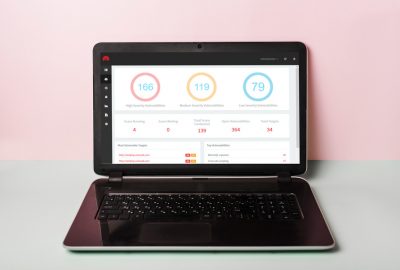 In this digital age, being on the web means being everywhere. This is especially true in companies whose assets are 100% Internet managed. But how can we make sure that our website is not vulnerable? Web vulnerability is as important to protect any business as physical vulnerability.
In this digital age, being on the web means being everywhere. This is especially true in companies whose assets are 100% Internet managed. But how can we make sure that our website is not vulnerable? Web vulnerability is as important to protect any business as physical vulnerability.
What is web vulnerability?
Web vulnerability is a weakness or incorrect configuration of a website or web code. This type of vulnerabilities allows attackers to gain control of the site assets. This kind of interference can even extend to the hosting server.
Websites with high traffic experience about 8,000 attacks per year, an average of 22 attacks per day. This is because attackers develop specialized tools to access certain platforms. Scanners or botnets exploit most of these vulnerabilities. When found, they to steal data, distribute malicious content or fill in spam and virus sites.
Types of web vulnerability
There are three types of web vulnerabilities that are usually the most common. These are SQL Injections, Remote File Inclusion, and Code Injection. Each of these vulnerabilities adapts to the type of attack the website receives. For this reason, it is important to know each of them and how programs protect against them.

SQL injection
The most common of these forms of attack, SQL Injection is a code infiltration method. It attacks the validation of page entries to perform operations on our database. The weaker the filtering of the variables generated by an SQL code, the greater the vulnerability. Then it infiltrates or embeds malicious SQL code into different portions of the page’s assets.
This is a general error that can occur in any programming language or script.
Among the most common repercussions for this kind of web vulnerability are the publication of malicious content or spam on a website; stealing information from the page or even taking full control of the website. Protection programs like Acunetix are especially good against this kind of attack.
Remote File Inclusion
Remote File Inclusion affects all companies whose pages work with command strings. What File Injection does is create an illegal path to the executable code of the page. This way, the attacker can control the files and assets that run within the domain. By impersonating the original code that protects the file, you take full control of the page; including administrator-level. Thus, the attacker can even create a “web shell” and completely destroy the page.
Code Injection
Code injection is when an attacker sends data outside the page. The most affected by this kind of attack are usually SQL, LDAP, Xpath or NoSQL queries; operating system commands; XML parsers; assets; function parameters; etc.

This type of web vulnerability in our code is through hacking or cracking. One of the main objectives is the modification of values in the databases of the page. We are talking about changes in appearance, databases stealing, etc. Another problem is the installation of malware. This malware can be anywhere on the page thanks to the permissions obtained by the attacker.
This threat also allows corruption, denial of access or withdrawal of administrative privileges. Unlike other threats, this is detectable when examining the page code. Yet, a functional test ran by programs like dbchdvujtix shows how to protect your assets.
Acunetix: remove your web vulnerability
Acunetix is the most reliable tool in the market to secure your website. It is a scanner that works in any kind of code, including HTML5, JavaScript and PHP. This way, they detect any irregularity in the code and generate reports. These reports allow a thorough analysis of the evolution in the security of the website. And it’s capable of generating recommendations on how to detect and repair flaws.
Crawlers
Acunetix uses the technology of “web crawlers.” These crawlers are small programs that protect every corner of the page code. The tracker’s job begins by reviewing a list of URL links. The administrator picks the orders and rules to follow; which allows for a level of customization that is consistent with the needs of each company.

Once it has the list and the assigned parameters, the tracker downloads the addresses. this way it’s able to detect changes in its base code. Then, analyzes each link, looking for any other link to possible new pages. When it finds new pages, it will repeat the task of downloading and scanning the entire server. Therefore detecting any alteration to the code of the page in each scan.
If you are interested in receiving more information about this tool, do not hesitate to contact us. At GB Advisors we offer the best in the market and we offer you a team of professionals willing to advise you and accompany you on your way to a more efficient IT environment.



